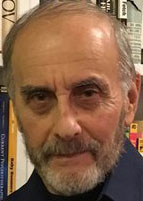For example, Jane, educated in Catholic grade schools, agreed that Jesus was Jewish. But when I followed up with, "Did he remain Jewish throughout his life?" she said, "Oh, no. He became a Christian and started Christianity." "When did that happen?" I asked. "When he was baptized by John the Baptist," she answered confidently. "It says so right in the Bible."
Noah, a young Jewish college student, who attends a small New England college, asked his Christian fraternity brothers, "What was Jesus' religion?" They stared at him as if he were an idiot. He pressed for an answer. Unanimously they declared, "Christian, of course."
The fact is, Jesus was born into a family of practicing Jews dedicated to Judaism. As prescribed in the Torah, he was circumcised on the eighth day after his birth. Throughout his life he was thoroughly committed to Judaism, the Torah and Jewish practices. He prayed in synagogues and taught Torah to "multitudes" of fellow Jews. And John the Baptist only baptized Jews to purify them for the expected arrival of the Jewish Messiah. All this is stated clearly in the Gospels; Jane's quote is not.
Christians are astonished when I inform them that the word "Jew" appears 202 times in the New Testament and 82 times in the Gospels, while "Christian" does not show up at all in the Gospels and is mentioned only three times in later parts of the New Testament -- the first mention is when Paul is preaching in Antioch years after the crucifixion (Acts 11:26). Why is "Christian" absent from the Gospels, which span Jesus' life and ministry? Because there was no Christianity during Jesus' life.
With the goal of healing antagonisms and closing the longstanding divide between Christianity and Judaism, I set out to restore the Jewish foundation of Christianity -- a foundation that Christianity stands on. In this quest I explore issues that have been overlooked or minimized, issues that were major factors in severing ties between Christianity and Judaism and that blurred their common heritage.
As I continued to struggle with the puzzling question of how Christianity lost touch with Judaism, I discovered a Church policy spanning centuries that may have been one of the most potent underpinnings of the historic Christian-Jewish divide: the Church's ban on Christians owning a Bible, reading a Bible or translating their Bible into native languages -- edicts that persisted until the 16th century, and even beyond. Christians, therefore, only knew what they were told by Church officials -- and what they were told was stripped of Jesus' Jewish identity. And, of course, the coup de grace: The teaching that the Jews killed Jesus.
Then when I stumbled on several Medieval and Renaissance paintings of Jesus, his family and disciples, I was struck by their misrepresentations, distortions and anachronisms. This prompted me to examine hundreds of other classic paintings. I even took a walking tour of the Renaissance galleries of the Metropolitan Museum of Art in New York City. To my astonishment, Jesus, his followers and his Jewish community were consistently pictured as blond, fair-skinned, northern European latter-day Christians, often surrounded by latter-day saints, Christian clergy and Christian artifacts -- images totally at odds with biblical facts and without a trace of any Jewish connections. I concluded that these distortions of "omission" established a powerful platform for anti-Semitism that continues to reverberate today. The artworks set the "Christian" Jesus apart from "the Jews," when, in fact they were all part on the same Semitic tribe of dedicated Jews.
I then turned my attention to the crucial question, "Did the Jews kill Jesus?" -- a charge that has echoed with deadly consequences since the crucifixion. Taking a fresh look at the Gospels' account of Jesus' arrest, trial and the events leading up to them, I concluded that the narratives make no sense whatsoever, scripts that wouldn't pass muster for an episode of the popular T.V. series "Law and Order." Moreover, the Gospels state explicitly who killed Jesus, a finding that will surely provoke controversy and heated debate. It's puzzling that the true perpetrator has been overlooked or underplayed.
Have you ever wondered what Jesus might say about virulent and enduring anti-Semitism? Indeed, what would the thoroughly Jewish Jesus have said to church leaders, monarchs and others who launched murderous acts such as the Crusades, the Inquisition and genocides in his name? I tackle this question in a mock trial, in which Jesus asks these perpetrators, "How do you justify your violent acts based on my teachings and mission?"
Christians today, especially evangelicals, are eager to let go of long-standing antagonisms and are reaching out to Jews in a spirit of reconciliation. But memories of unspeakable persecution over many centuries are a barrier for Jews to participate fully in the healing process. Given this new environment, I appeal to my fellow Jews to drop the "Jesus Phobia" and accept Jesus as a faithful Jew -- without having to embrace the claim that he was the Messiah. To encourage this I point to the pantheon of false Jewish "Messiahs" throughout history, many of whom were destructive to Judaism, but are still revered for their teachings, while Jesus is rejected.
Finally, I could not resist commenting on Dan Brown's popular novel "The Da Vinci Code," which, like classical artworks, begins with a Jewish story but promptly converts into a Christian one. I show how "The Da Vinci Code" gets recoded when Rabbi Jesus' wife and daughter are authentically recast.
In exploring these issues and the realities of Jesus' life, I strive to shed new light on the history of anti-Semitism and on the destructive forces that have alienated Christians and Jews. My aim is to help heal the rift between the two religions and galvanize the reconciliation process.






